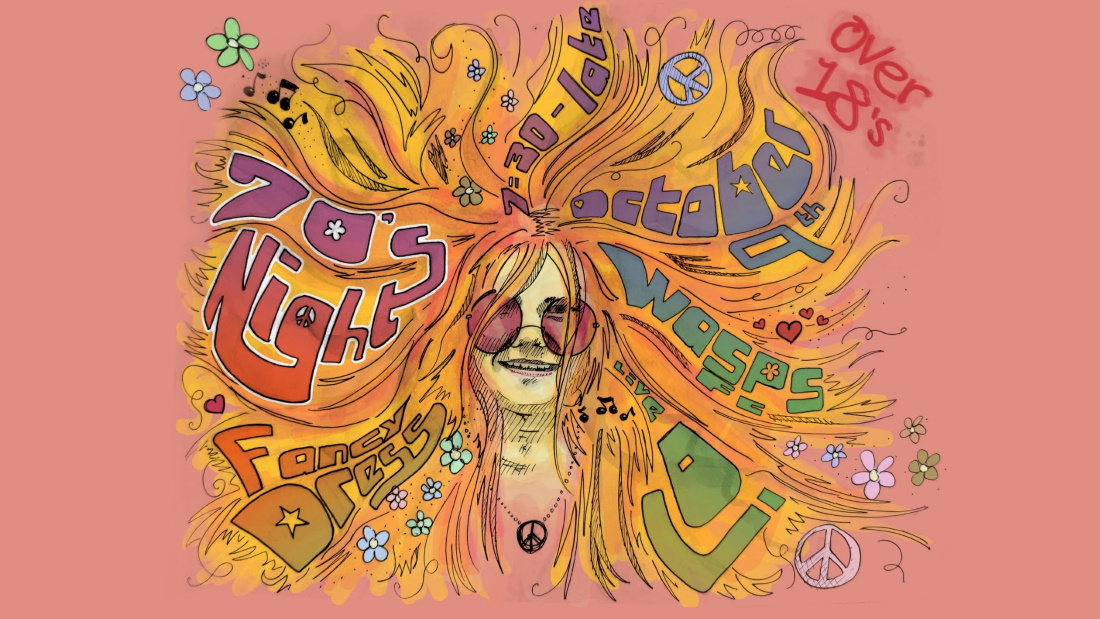
Like survivors in a new world the youth of the 70s had become associated with the notion of individual freedom that set the stage for what would come to be known as, the flowerpower movement. In many cases, these protests were part of a wider social and political movements taking place in other Western countries, yet behind the mood of this new era, came the preoccupation with oneself as self-expression more often than not, took the place of the spoken word.
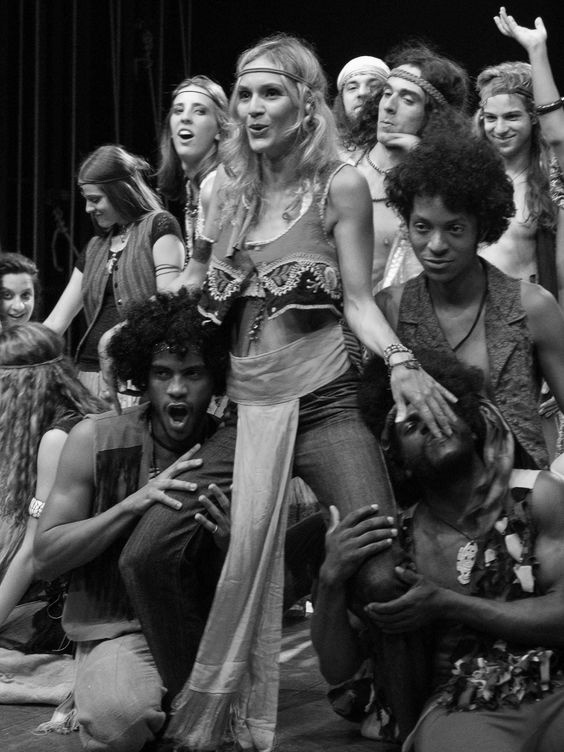
In 1969, the Woodstock music festival in the US energized a new generation of youth, and Australia in the early 70s became a hotbed for live performances as the industry became awash with new emerging talent. Among the new arrivals to throng the stage in the early 70s was Pop Queen turned Australian Idol, Marcia Hines.
Marcia Hines early life in many respects embodied youth culture after she debuted at the age of 16 in the Australian production of the stage musical “Hair”. A product of the Hippie counterculture and sexual revolution of the late 1960s, “Hair” tells the story of the “tribe”, a group of politically active, long-haired Hippies of the age of Aquarius living a bohemian life in New York city while fighting against conscription into the Vietnam war. The musical broke new grounds in musical theatre by defining the genre of rock musical.
Rock musicals, rock operas and pop operas all flourished in the late ‘60s and 1970s, and productions like Hair and Jesus Christ Superstar were the groundbreakers that turned many on to the idea of combining theatre, storytelling and rock music.
Glam rock, androgyny and sexual politics
While the US had college stations and England, pirate boats in the channel, in Australia, all we had was time and weather men, no women…hyper DJs and hyper non-stop sound where silence, and real names were deadly, continued until 11am Sunday, January the 19th, 1975, when Double J, the first radio station in Australia for more than 40 years, exploded out of the wireless on 1540, on the AM frequency, with a song that had been banned by the commercial stations.
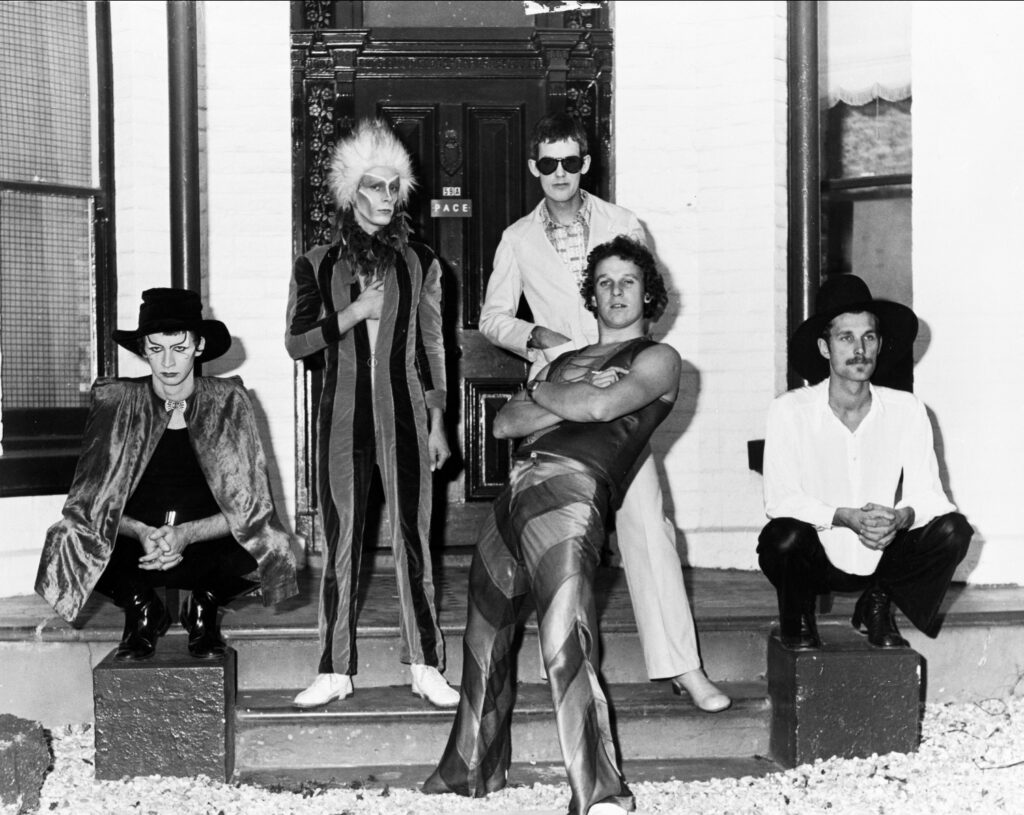 In 1975, after performing at the Sunbury Music Festival (regarded by some as Australia’s Woodstock), Skyhooks, who were signed to Mushroom Records, released Living In The 70’s. Six tracks from the album were banned, and the controversy combined with the singles “Living in the 70s” and “Horror Movie” ensured the album sold well.
In 1975, after performing at the Sunbury Music Festival (regarded by some as Australia’s Woodstock), Skyhooks, who were signed to Mushroom Records, released Living In The 70’s. Six tracks from the album were banned, and the controversy combined with the singles “Living in the 70s” and “Horror Movie” ensured the album sold well.
Their actual style of music was originally surf rock, but became glam rock. They were hugely successful, giving the young Australian public just what they wanted – songs about Australia – places, experiences, values and so on, rather than songs about love, which Australians up until that time had been famous for.
Skyhooks: ‘You Just Like Me ‘Cos I’m Good In Bed‘ while seen as experimental at the time, proved extremely popular with younger audiences. As opposed to what happened in Sydney, in Melbourne experimental music established its own venues, its own publications, and developed its own audience. The resistance that so marked the Sydney scene was, to a large extent, missing in Melbourne, simply because experimental music was not seen as being in competition with other kinds of ‘new music’ for audiences, spaces, media exposure, or funding.
Punk Rock
By late 1976, overseas bands such as The New York Dolls, Television, and the Ramones in New York City, and the Sex Pistols, the Clash, and the Damned in London were recognized as the vanguard of a new musical movement. The youth in the 70s far from being profane, found themselves living in a profane society that they objected to, and by the late 70s a new subgenre of rock was emerging. The first wave of punk rock was aggressively modern, distancing itself from the flowerpower headiness of the hippie movement, they became a subculture that scornfully rejected political idealism.
The Saints were one of Australia’s first punk bands. The earliest incarnation of The Saints was formed by Ed Kuepper (guitar) and Chris Bailey (vocals) in Brisbane, Queensland in 1973. They shared a background in immigrant families (Kuepper’s German and Bailey’s Irish), and an admiration for high energy 1950s and ’60s music, such as the Detroit rock of The Stooges and MC5.
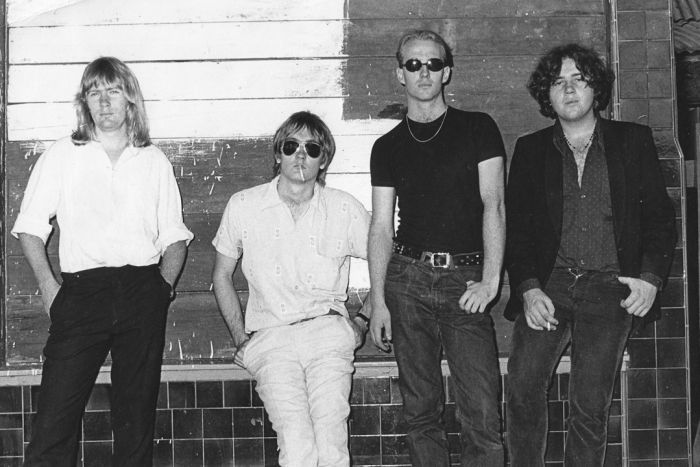 Queensland at the time was controlled by the conservative, authoritarian Country Party democratic government of Sir Joh Bjelke-Petersen – an environment with plenty of inspiration for creative and alienated young people. The result was a frenetic, pulsating sound, topped with Bailey’s sardonic lyrics.
Queensland at the time was controlled by the conservative, authoritarian Country Party democratic government of Sir Joh Bjelke-Petersen – an environment with plenty of inspiration for creative and alienated young people. The result was a frenetic, pulsating sound, topped with Bailey’s sardonic lyrics.
The Saints were employing the fast tempos, raucous vocals and “buzz saw” guitar that characterised early punk rock. With their debut single, “(I’m) Stranded“, in September 1976, they became the first “punk” band outside the US to release a record, ahead of better-known acts including the Sex Pistols and The Clash. They are one of the first and most influential groups of the genre.
Around this time electronic music studios were being established at the La Trobe and Melbourne Universities, and the new and experimental music radio show on 3CR community radio (presented by John Campbell, John Crawford and Warren Burt), with a spirit of unfullfilled youth engaged with a new audience.
With a vibrant mix of eclectic hybrid of blues, gospel, rock, and arty post-punk, Australia’s ‘Little Band scene’ went onto stoke the late 70s for new music lovers in the Fitzroy and St Kilda suburbs of Melbourne, which produced a surge of experimental bands.
The Birthday Party (originally known as The Boys Next Door), who formed in Melbourne out of the ashes of these earlier bands, despite having limited commercial success was particularly influencial on the emerging gothic punk rock scene. The Birthday Party’s influence has been far-reaching, and they have been called “one of the darkest and most challenging post-punk groups to emerge in the early ’80s.” The group’s “bleak and noisy soundscapes,” which drew irreverently on blues, free jazz, and rockabilly, provided the setting for vocalist Nick Cave’s disturbing tales of violence and perversion.
During sessions for Door, Door at Richmond Recorders in Melbourne in January 1979, the Boys Next Door recorded “Shivers“, an unashamedly melodramatic example of post-adolescent anguish.
Yacht Rock
While the 70’s saw an incredibly diverse range of styles of pop and rock music taking off from styles developed internationally, from glam and hard rock to disco, in the mainstream this came as what can be described as an international version of what was known as yacht rock, which really was pop music despite its name, as mirrored by its US counterparts, principally Christopher Cross, Barry Manilow, The Captain and Tenille and Boz Scaggs, an honorary mention going to Rupert Holmes for The Pina Colada Song. In Australia its prime exponents were Peter Allen, John Paul Young and Little River Band, possibly extending also to Sherbert.
As suggested by the name, yacht rock was light, breezy and a little frothy in its varying incarnations, catchy but not taking itself too seriously or getting mired down in heavy eight minute prog rock grooves. It was light rock and pop essentially, the genre being championed in the US no more than by Boz Scaggs.
Amongst its Australian proponents, the international dimension came about partly in the literal sense by the overseas success of Peter Allen and Little River Band as well as the international jetsetting lifestyle evocations, newly introduced to middle Australian consciousness, of Allen’s ‘I Go To Rio‘ mirrored by Barry Manilow’s ode to the nearby Brazillian beach of Copacabana and Rupert Holmes’ ‘Pina Colada’ song, with its summery, waterside evocations.
Little River Band gave us ‘Home On A Monday‘, with its lyrics, “Can you guess where I’m calling from? The Las Vegas Hilton”, at the start of verses one and three, and the bluesy, pretty and melancholic accompanying music. This musical style evoked a major “good time”, leisure and lifestyle movement of the 70’s and the search for freedom in the sun and by the water, extending from the more subversive, explosive liberation of the 60’s. Aside from Peter Allen, Little River Band were Australia’s biggest international success, doing very well in the US while they were huge in Australia, eclipsing John Paul Young.
Young had one huge hit in ‘Love Is In The Air‘ and a lesser hit with ‘Yesterdays Hero‘, whereas Little River Band, named after a small town near Barwon Heads in Victoria, had several big hits between 1975 -1979, followed by a couple of mid-level hits in 1982 and 1985 with its John Farnham-led incarnation after lead singer Glenn Shorrock left the band. While this was definitely a mainstream pop movement, the thing that set Little River Band apart was the quality of their songwriting, mesmerising melodic harmonies and musical substance. While pop music, there was a seriousness and songwriting quality belying the format.
Songs such as ‘Reminiscing‘ soared with its gorgeous, uplifting melody and romantic overtones. ‘Lonesome Loser‘ married a depressing subject to a cheerful song, full of hooks and that exemplified clever songwriting. ‘Help Is On Its Way‘ became an Australian anthem for years and ‘Cool Change‘, like ‘Home On A Monday‘, constituted a huge emotional release, indicative of the very best songwriting, soaring, emotional, plaintive and hauntingly beautiful. LRB transformed into a synth pop-rock band in the 80’s with John Farnham at the helm. While they released four albums in the 1980’s and enjoyed continued mid-level US success, in Australia Little River Band only had two significant hits with ‘The Other Guy‘ in 1982 and ‘Playing To Win‘ in 1985.
Disco, Funk and Jazz
Dancefloor music apart from being popular with young dance goers had to a large extent developed an atmosphere with a unique style. Best described as upwardly-mobile and groovy, the music that had sprung from this era, would be the last mass popular music movement, driven by the baby boomer generation.
Born LaDonna Adrian Gaines, Donna Summer became the queen of disco in the 1970s, winning five Grammys. With her big voice and glittery style, she defined disco for many fans and anybody who’s been to a wedding or school dance over the last 30 years knows at least one of her songs, including hits like “Hot Stuff“, “On the Radio“, “Love to Love You, Baby“, or “Last Dance“.
Giovanni Giorgio Moroder, an Italian singer, songwriter and DJ, credited with pioneering Italo disco and electronic dance music started his own record label called Oasis Records, which several years later became a subdivision of Casablanca Records. Using synthesized basslines, and audiophonics he produced singles for Donna Summer during the late-1970s disco era, including: “Bad Girls“, “Last Dance“, “Love to Love You Baby“, “No More Tears (Enough Is Enough)“, “Dim All the Lights“, “MacArthur Park“, “Hot Stuff“, “On the Radio“, and “I Feel Love“.
As the nightclub scene started to take-off in Sydney, American DJ, Chris Williams in 1975, decided to step out from behind the booth and have a go at cutting his own disco material. Living in Kings Cross he contacted Sydney party outfit the Hotrox Band who included Brooke Tabberer on vocals and Graeme Skelly on guitar and in one evening put down an albums worth of memorable funk and disco material that was released as “Keep On Dancing”.
Williams also recorded a single the same year with another band known as the Austral Funk Machine for Wizard Records. It claims to be Australia’s first disco hit and while it was never a hit it is probably the first Aussie disco release.
Created by club DJs and music producers, the genre of electronic music that’d emerged out of the dance halls and garages of suburban Australia in the late 1970s, became one of Australia’s most successful exports…And by far the most famous and successful Australian pop acts of those times would have to be Leo Sayer, who had a top 10 hit in 1977 with “You Make Me Feel Like Dancing“, and John Paul Young, who achieved success with “Yesterday’s Hero” in 1976 and “Love is in the Air” in 1978.
The 1970’s saw a wide range of music styles develop, evolving out of those that had gone before, to create entirely new ones such as punk and glam rock, disco and yacht rock. Continuing in the spirit of the late 60’s, social boundaries and mores were stretched and challenged ever more with the explosiveness of punk and in the Skyhooks’ glam rock, gritty social commentary and sexual obscenity never broached so openly before in the mainstream. Then, on the other end of the spectrum offering pure hedonism and pleasure as well as music to liberate the soul you had jazz, funk, disco and yacht rock. Whatever your preference, there’s no denying the 70’s constituted an enormous and sustained burst of innovation and creativity. The rich and still vibrant veins of which can be and are still being joyously mined today, as Australia embraces its deep, magical musical and cultural history.
If you appreciate this type of in-depth, independent, journalism, then please consider donating to keep this blog rolling! Your support is crucial and much appreciated. Many thanks to those of you who have already contributed.


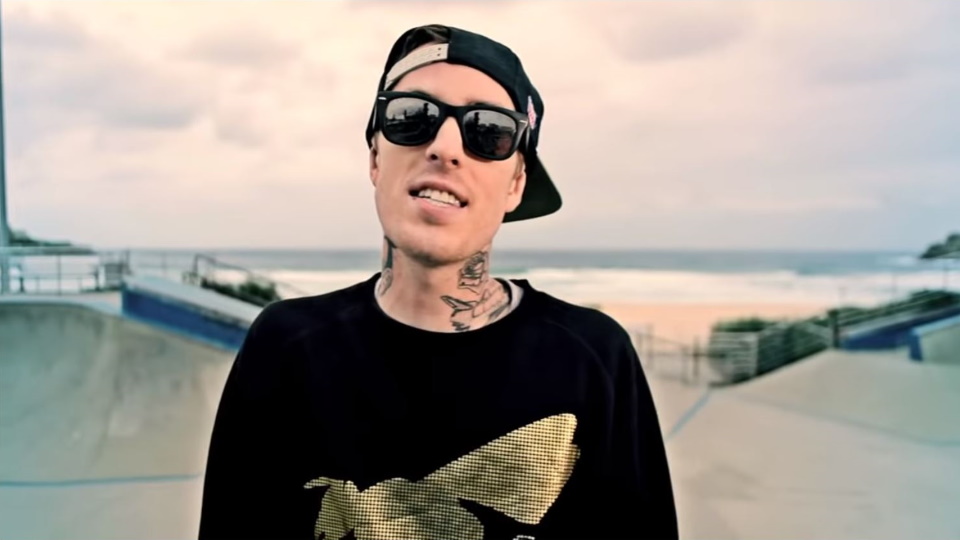
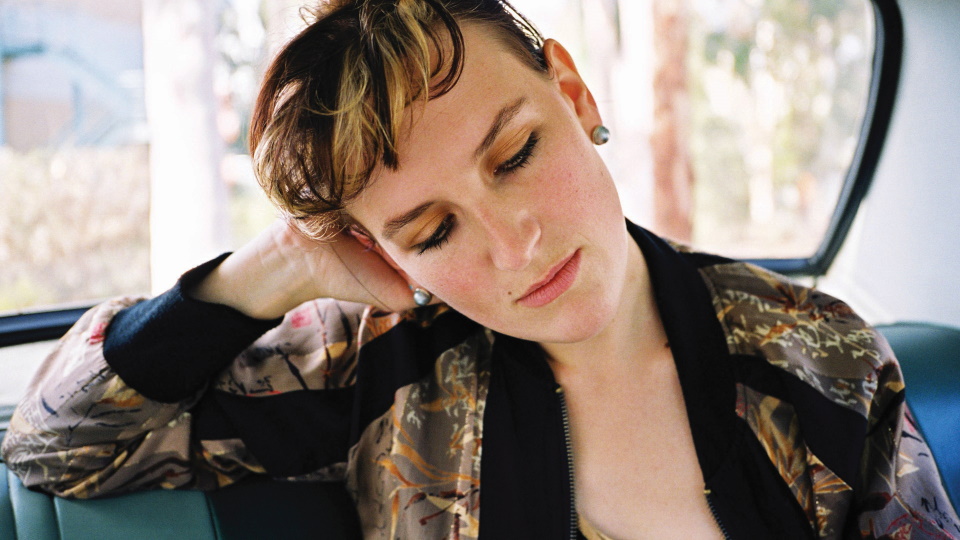
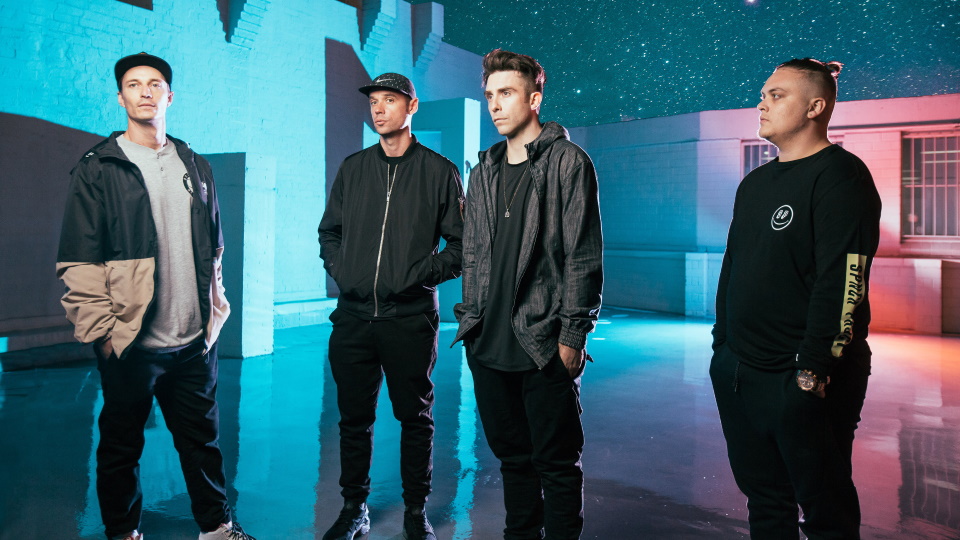

Comments